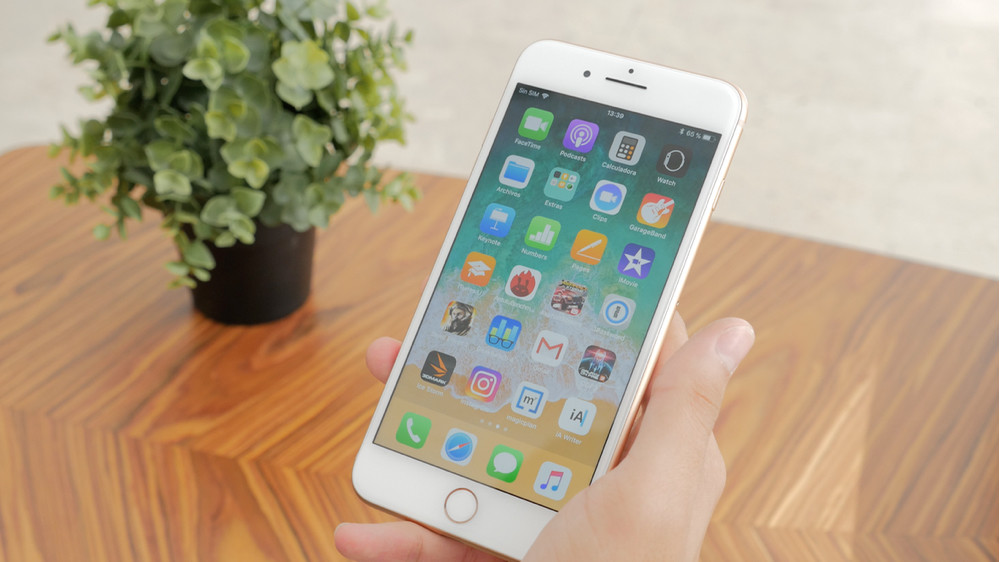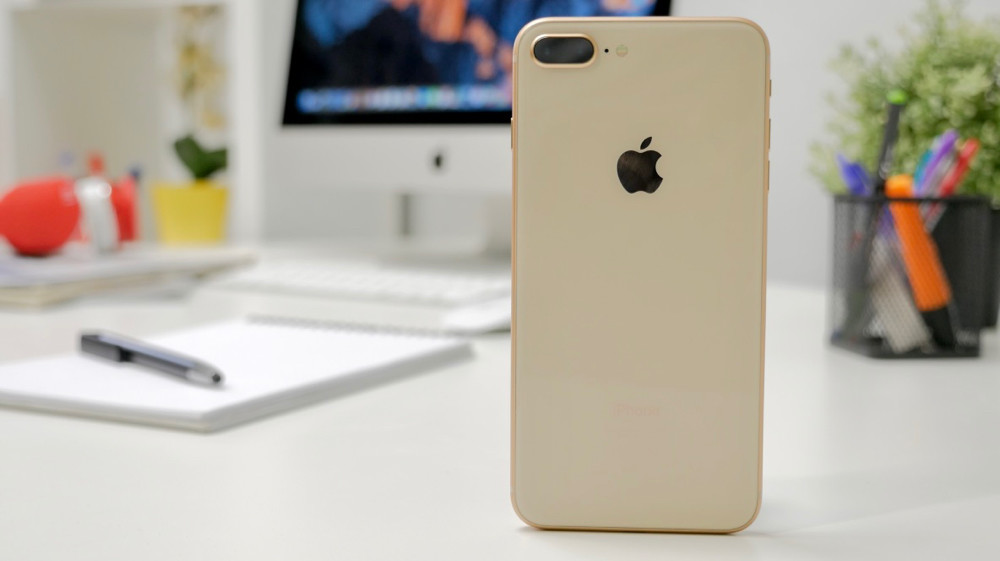A design from years ago with a slightly improved screen
A premium phone in 2017, with the frames and dimensions of the iPhone 8 Plus is not admissible. Apple knows it, has seen it in all its rivals and for that reason in a month we will know firsthand the iPhone X.
Glass brings advantages but what the user stays with is an identical global image that until last year could be worth.
The funny thing is that the same design that supports finishing keeps it in an update that apparently is quite minor. The main change is the return of the glass to the back of the iPhone 8 and 8 Plus. This return to the past allows new tones for the iPhone (the names of the colors are the same, but the appearance is slightly different) but the differences are very subtle, almost imperceptible.
However, that step from metal to glass is quite noticeable in hand. The weight goes up, up to 202 grams, and the first times you take the iPhone 8 Plus you can see that those extra grams are there. The touch is warmer and this initial time with the terminal seems to me to be less slippery. But it also transmits more fragility.
The positive of this known design, if you do not mind its large size for the screen it houses, is that Apple keeps the fingerprint reader. And in the absence of thoroughly checking how Face ID is, we prefer it by a landslide.

True Tone for the same screen
In the design with frames of the iPhone 8 Plus the screen has less prominence. It maintains 5.5 inches with 1080p resolution, so the experience is the same: great color fidelity, very good sharpness but below what the price should offer, and enough brightness to have a pretty correct display outdoors. One of the best screens in the market.
What Apple adds in this iPhone 8 Plus is True Tone technology, technology that we already verified that works quite well in the iPad Pro that premiered it. In the new iPhone it does exactly the same thing: adjust the color temperature so that the fidelity of color is maintained regardless of the ambient light in which we use the terminal.
Logically the immersive experience of this screen is not the same as with a terminal without frames. At least there is improvement in sound, and in the first tests with videos we could notice some more power in the stereo speakers (one up on the front and the second on the right side of the charging port) and a little more separation between speakers. In any case, the placement still does not convince me because depending on how you take it, you will be covering a speaker.
Bionic A11 processor, the truly relevant thing about this iPhone
And the iPhone X, because they share a processor. Apple’s new demonstration of dominance in the design and manufacture of processors for smartphones is called A11 Fusion, and it’s not just raw power.
Actually the performance improvement is not noticed when using the terminal. There are no differences in fluency or use of demanding games / apps between this iPhone 8 Plus, last year’s model or the high-end of many other manufacturers.
But the A11 Bionic is here for something, and both in augmented reality (there is still very little relevant to give importance) and with Siri is of vital importance.
It also has its role in the improvements that Apple offers in storage. I do not mean that the base model of iPhone 8 Plus is now 64 GB (the next is already 256 GB) but that both images and videos now occupy about 50% less space in that internal memory.

Apple has adopted H.265 (HEVC) for video and HEIF for images thanks to the hardware possibilities of the A11 Bionic, which has other advantages such as returning to an original image at any time even if you have retouched or modified it and the preview is the final image. For now that can be achieved on the iPhone, iPad or Mac with High Sierra, so with the rest of the ecosystem the jpg will continue to be the reference format.
You may also like to read: iPhone X vs Samsung Note 8, Mi Mix 2 and LG V30: The war of smartphones without frames
Battery that changes (but as if not)
With a capacity slightly lower than last year’s iPhone 7 Plus, the autonomy of the iPhone 8 Plus, in these first moments with the terminal, we think it will remain even. This means the day of intensive use (or day and a half more controlling the use of screen), a fair number for a terminal of large size and where you always expect the maximum of this section.
From there, the theory looks good with the arrival of fast charging and also wireless (one of the advantages of using glass on the back of the iPhone). But for now all this is useless.
Wireless charging is still inefficient, and in domestic use for now it makes little or no sense. Perhaps in public spaces where we do not have a charging cable, it can be accommodated. What Apple has done well is to opt for a standard such as Qi, adopted by virtually the entire wireless charging industry.
Much more serious is the fast loading. With batteries that last less and less, it is the table to hold onto and that almost all manufacturers offer us. Apple introduces it in its iPhone 8 Plus but nevertheless does not give an option to take advantage when the charger that comes by default in the box is the 5 W (output of 1 A).
If to take advantage of that fast charge you have to buy a 29-W USB-C charger from Apple, with a price of 59 euros, badly. With it we could reach half the load in half an hour. In our first tests, using one of 10 W, there has not been much improvement: from 59% to full load in one hour.
In any case we will try for the review with more third-party shippers and we will tell you results and load times.

Recovered the disadvantage with the camera
After these hours with the iPhone 8 Plus, I am already clear that the camera is the most significant advance of this new iPhone at consumer level and its day to day. The improvement is not amazing but it is enough to put the iPhone 8 Plus back on top.
The camera of the iPhone 8 Plus is the best example we can put right now of the evolution that we are already seeing in mobile photography: the work of the ISP. The sensors of the iPhone 8 Plus are virtually identical to those of last year. And yet the iPhone 8 Plus makes better photos.
Although we will talk about it more precisely in our complete review, we have already noticed that the camera is slightly faster taking photos, but above all it offers us some colors that, while remaining true to reality, seek to be more striking for the eye. This is so to the extent that the camera of the iPhone 8 Plus takes the images always in HDR by default. We can deactivate it but for now our recommendation is to leave it as it is because the results are very good.
We have not yet been able to analyze the night photos and test them in conditions, but in those that we have done during the day we can also see an increase in the detail and sharpness, an aspect in which the work of the ISP is seen and where Apple had been somewhat behind to Samsung, for example.
From the camera of the iPhone 8 Plus we will test in detail the flash mode of filling with slow synchronization and of course the Portrait mode, which comes improved and with more options, all of them supported by the variation of the lighting. The first shots tell us that you can get interesting results but not in any condition or without dedicating time. What we liked the most is that thanks to the HEIF container, in every photo we make, we always have the option to go back or change the effect.
In a few days we will publish the full analysis of the iPhone 8 Plus, so if you want to know a particular detail or have doubts, you can leave a comment and we will try to answer you in the review in a short time.
